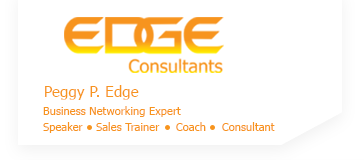
Networking – How to Create an Effective 30-Second Commercial
How many times have you attended a networking function only to find that everyone there gives virtually the same 30-Second Commercial? It goes something like this…
“Hi, my name is Lucy Jane Jones and I am an Account Representative for Jones Sales Associates.” Uh, I sell Wonderful Widgets. If you have a need of a Wonderful Widget, we give $10.00 discount if you mention my name at checkout. Hmmm, our office is just down the street on the next corner in the bright shiny high-rise on the left. Omm, you can call me anytime and I’ll be glad to demonstrate our Widget to you or your office manager. Lucy Jones with Jones Sales Associates, home of the Wonderful Widget.”
Please, just shoot me!
An effective 30-second commercial absolutely must be:
- Engaging
- Creative
- Educational
- Memorable
- Paint a verbal picture for the audience
Nothing is engaging, creative, educational, and memorable or paints a verbal picture about the script above.
To engage your audience, most of us are like 5-year old children. If you are talking to them, the easiest way to connect with them is to:
- Ask a question
- Lucy could have started her commercial with:
- Let’s see a show of hands. How many of you have seen the Wonder Widget that just hit the market about a month ago?
- Now in a room of 25-30 people, you would think that 1-2% of the attendees have seen an advertisement run on local television for this new product.
- Lucy could have started her commercial with:
To be creative, Lucy could include a statement that includes the corporate tagline for this new product on the market as her opening statement.
To be educational, Ms. Jones could declare 1-2 key pointers of what the Wonderful Widget will do for you.
To be memorable, bring a sample of the Wonderful Widget for a show-n-tell to her audience.
Finally, to paint a verbal picture, Lucy could enhance her commercial by describing in brief, concise terms, what are the various features of her product.
Now to pull all of these elements together, Ms. Jones will also need to include three elements so that her audience can determine how they can be of assistance to her in the marketplace.
These three elements include:
- The WHO
- The WHAT
- The WHY
WHO – Who are your prospective clients?
- Who are your prospective clients?
- What level of management are they?
- What industries are you looking to penetrate?
WHAT – What product and/or service do you offer?
- Concentrate on talking about only one product or service at a time.
- If you have more than one product/service, create different commercials for each.
WHY – Why do people need this product/service?
- You are describing your Value Proposition to the prospective client.
- What problem or pain-point does your product address or solve?
You might use the following form to help you craft an effective commercial:
I work with (who)______________________________________________
I provide (what)_______________________________________________
So that or because (Value Proposition)_____________________________
Your Name and Company_______________________________________
You might ask, why do I say my name and company last? Shouldn’t I say those things first?
No, because your name or company does not engage the audience. Remember you have to grab their attention with the first few things that you say.
Other things you can do to improve your 30-Second Commercial is to:
- Start your commercial with a question that helps them to think.
- Make a statement about something that pertains to your industry or product offerings.
- Tell a very brief story about how you have helped a client solve a problem. This is particularly effective if you are in a service industry rather than marketing a product.
If you will combine all of the points on crafting your 30-Second Commercial, your audience will be more apt to help you with referrals.
Finally, after you have tweaked your new commercial, try it out on a colleague. When you are confident that you have whittled it down as lean as you can get, use a timer and practice-practice-practice.
Peggy P. Edge (c) 2016


